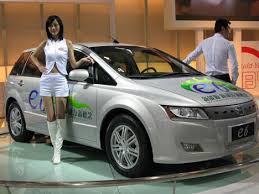Earth2techgives it's biggest cleantech disappointments of 2008 :
1) Tesla Hits A Wall: The startup started to run low on cash — reportedly at one point as little as $9 million
2) EEStor Delays Some More: We were waiting for mid-2008, then late the startup and its partner say the big unveiling won't come till 2009.
3) T. Boone Derailed: Oil baron turned wind power advocate T. Boone Pickens used his $58 million PR campaign this year to create a lot of hope and support for clean power. Then the economy tanked. Pickens told us that the debt markets in particular took the wind out of his sails.
4) Wave Power Plan Gets Washed Away: Canadian company Finavera Renewables saw its plans to install a 2MW wave power project in California waters wash out to sea when the California Public Utilities Commission (CPUC) denied its application.
5) The Clean Coal Lobby Gets Dirty: A report from the think tank the Center for American Progress finds coal companies have only spent $3.5 billion over the past several years investing in R&D for carbon capture and sequestration, the most promising technology for reducing emissions from coal power — just 1/17th of the coal industry's profits in 2007 alone, according to the group.
6) Corn Ethanol Industry Still Asking for Aid: Corn-based ethanol companies had a rough year: Corn prices spiked, the industry faced political and public backlash, and margins on ethanol narrowed, forcing companies like VeraSun to file for bankruptcy. Most recently, the corn ethanol lobby asked for $1 billion in short-term credit from the government and as much as $50 billion in loan guarantees. The lobby claims it's not a bailout, but the industry isn't sustainable
7) GM Still Featuring Bob Lutz: The U.S. automaker with one of the most promising electric cars in the pipeline is still employing an exec that publicly disputes the carbon theory of global warming. GM has managed to convince the government it needs a bailout, which requires it to prove it can be financially viable and meet current emissions laws
8) UK Wind Plans Blowing Away: The UK looks to be facing an uphill climb when it comes to meeting its wind power targets. The government has a plan to supply a third of its electricity from wind by 2020, but both Royal Dutch Shell and BP have pulled their offshore wind projects investments in the region as reports suggest the goal is far too aggressive.
9) It's Gonna Be A Lot Harder Than We Thought: The research, from the University of Colorado at Boulder and McGill University in Montreal, says Beyond problems with wind power, scientists and politicians have realized that meeting existing carbon reduction goals won't be enough clean technology is needed.
10) Administration: The incoming administration's commitment to a modestly aggressive plan — $150 billion over 10 years in clean power







 As a child, Nicola Tesla dreamed of one day harnessing the power of Niagara Falls. Nicola Tesla achieved his dream, when he, and George Westinghouse were able to convert the power of Niagara Falls into electricity, and to send that electricity into Buffalo NY. They accomplished this fete in1896, just 17 years after Thomas Edison perfected his electric light bulb.
As a child, Nicola Tesla dreamed of one day harnessing the power of Niagara Falls. Nicola Tesla achieved his dream, when he, and George Westinghouse were able to convert the power of Niagara Falls into electricity, and to send that electricity into Buffalo NY. They accomplished this fete in1896, just 17 years after Thomas Edison perfected his electric light bulb.